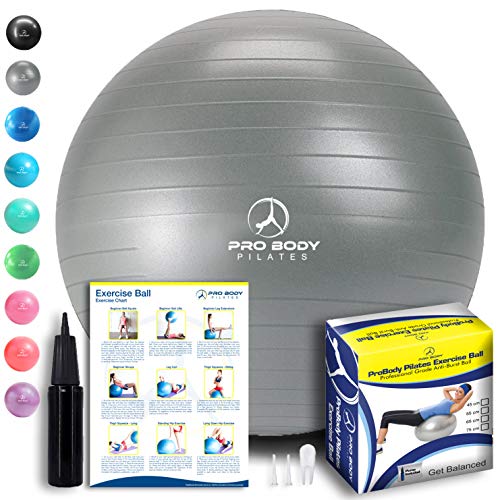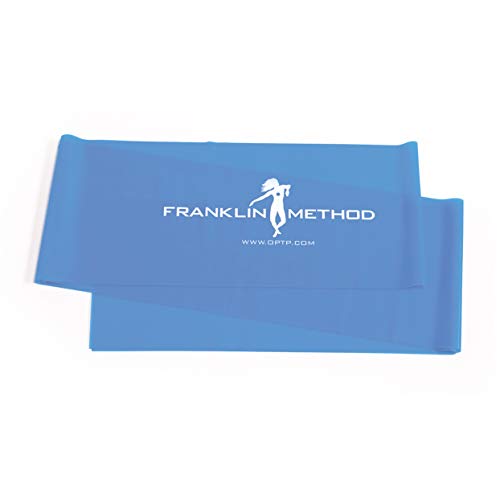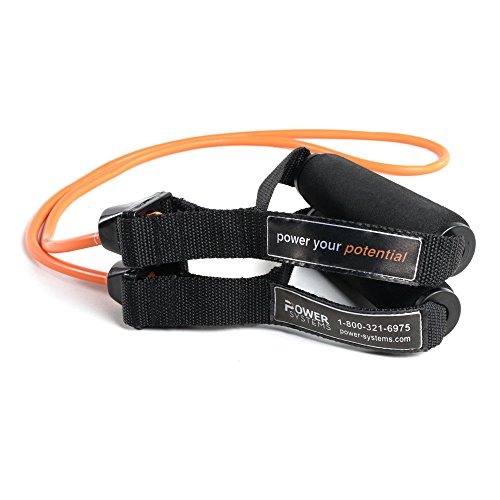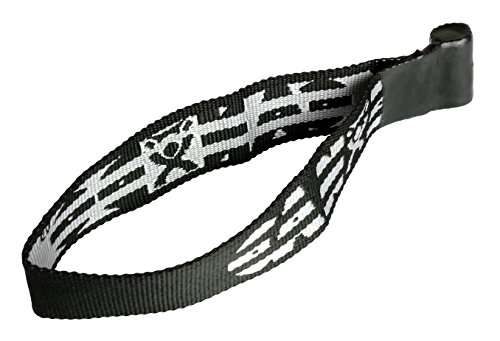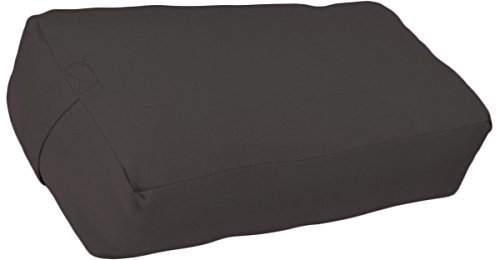My Favorite Props
Some days you’re just not going to make it into the studio. One of the (many!) great things about Pilates and yoga is how little it takes to get a great full body workout. A quiet spot and a comfortable surface is all you need to get started. However, adding a few props opens up new possibilities and unlocks an endless variety of options to create a session that meets your body’s ever-changing needs and keeps you interested and excited to step onto your mat.
These are my favorite props to include in my Pilates and Yoga practices or to use in between sessions. They’re inexpensive, don’t take up much space (with the exception of the stability ball, I store all of mine in a large basket that I keep in a corner next to my mat so that they’re always within reach) and widely available both online and in stores. Links are provided for all of my favorites to purchase through Amazon (as that seems to be the go-to shop for many of us these days) below.
As an Amazon Associate I earn from qualifying purchases. What does that mean? If you click on a link and buy a product, I receive a small commission. Thank you for the support!
Pilates Supplies
Pilates Mat
If I could have only one all-purpose mat, it would be my Manduka PRO® Yoga Mat for it’s grip, thickness, sturdiness and size. For workouts done mostly lying or kneeling on the floor (like Mat Pilates) though, I appreciate having a little more cushion under my spine and knees.
Benefits:
Soft comfortable support for joints even in exercises like Rolling Like a Ball
Lightweight
Built-in nylon velcro straps make for easy transit and storage
Low cost (under $20)
Comes in a variety of color options
Weaknesses:
Soft foam is more likely to tear/get damaged - keep away from pets
Less grip for standing yoga poses (material will stretch)
Foam Roller
I LOVE my foam roller! Not only is it my absolute favorite way to mobilize (a.k.a. get rid of that sticky feeling in) my mid-back, it’s an essential tool for stretching, myofascial release and self-massage. As if that weren’t enough, it’s also a great way to add an extra balance, core strength and coordination challenge to a workout as well as re-create Reformer exercises at home.
My favorite foam rollers come from OPTP, a leading equipment supplier for physical therapists, trainers and Pilates instructors. Their Pro-Roller Standard Density Roller is not too firm, not too soft, just right for a multitude of uses.
The Pro-Roller Soft Density Foam Roller is a nice choice for sensitive spines and anyone who prefers a softer surface.
I prefer the 36” versions but smaller 18” rolls are available as well as 36” half-rollers which are flat on one side to provide greater stability.
TRY IT OUT:
The golden standard. . . not too firm, not too squishy. . . just the right size and density for a wide array of uses. Whether you’re looking to release tension and soothe sore muscles or increase the core strength and stability components of your workout, this roller has you covered.
Made of a softer, less dense foam than the standard PRO-ROLLER®, this is a great option for anyone looking for a softer surface. It provides gentle cushioning for sensitive spines and greater support for balance work.
Stability Ball
Even in the studio full of equipment, I use stability balls with clients every day - to teach spinal articulation, to relax the hip flexors while performing abdominal work, to increase hamstring and glute activation in bridges and so much more. These are a great tool for improving core strength and stability whether you’re looking to protect and create support for a sensitive spine (from injury, overuse, surgery or degeneration) or up-leveling your current workout.
I recommend and use the 55cm ball, even with taller clients, when the majority of the work is being done supine or in a plank position. If you plan to sit on top of the ball (whether for upper body work or while at your desk, a 65cm ball will be better if you’re taller than 5’3”. A good rule of thumb is that you want your hips above your knees when sitting on top of the ball.
I like both of the below options because they are made of a professional-grade, anti-burst and low-odor material, include a hand pump to inflate, are low cost and come in a variety of color options.
Resistance Bands
Part of the magic of the Pilates equipment is its adaptability. By using spring tension instead of weight, the muscles are worked both concentrically AND eccentrically. What this means is that more muscles are recruited to perform each exercise with less rest, resulting in a faster and more effective workout. The springs also create a feeling of simultaneously stretching and strengthening the body.
When you’re not in the studio, this feeling can be recreated by using resistance bands. These are my go to for travel - they’re light, pack up into a tiny space and can be used for a variety of exercises.
The All-in-One: 11’ Franklin Method Resistance Band
11 feet of length! Most flat resistance bands available for sale are either 4’ - 5’ long or come in much longer lengths (6 - 50 yards) designed to be displayed and cut into smaller lengths inside a studio or clinic. It’s a Goldilocks conundrum - 5 ft is too short and 6 yds is too long - 11 ft feels just right to me! This length allows me to use the same band for my entire body simply by adjusting my grip position for more or less tension. It also enables full body movements engaging the arms and legs simultaneously to challenge core strength and stability - AND - it packs up into even the smallest bags for workouts on-the-go.
TRY IT OUT:
For a Studio Workout at Home: Power Systems Premium Versa Tube
Even in the studio, I use these bands daily. An absolute essential for posture and core stability work, these bands can be used to mimic many of the movements done on the Reformer and Cadillac at home. The comfort of the easy-to-grip handles and the durability of the tubing is what makes Power Systems Premium Versa Tube my top pick.
While Power Systems offers these in 6 different resistance levels, the ones I find myself coming back to over and over are the:
ORANGE (Extra-Light) for women just getting started, working with injuries or who prefer using a lighter weight
GREEN (Light) for women looking for a medium level of resistance and men working with injuries
An Essential Accessory: CanDo Door Anchor
This durable, simple to use accessory provides a sturdy attachment point for the Power Systems Premium Versa Tube. By trapping the rubberized end of the strap behind a door, you can easily create, adjust and then remove an anchor point for your workouts without creating a hole or damaging walls.
PRO TIP: For the most secure anchor, use a heavy weight door that closes securely. Open the door enough that you can slide the cylinder-shaped anchor through the space between the door and the jamb on the hinge side of the door, then close the door towards you to trap it.
Best for Targeted Hip & Glute Strength: Power Systems Versa-Loop
The beauty of these loops is their simplicity. No knots to tie or untie. No uncomfortable bumps digging into your body. Just slide one around your legs for powerfully effective lower body strengthening.
For my clients, I have these in every color. This set is a great option if you’re not sure where to start.
If you’re uninjured and of average strength, I’d recommend starting with the BLUE (heavy) BAND. If you know that hip and glute strength or pelvic stability is a challenge, try starting with a GREEN (light) or RED (medium) BAND.
TRY IT OUT:
Magic Circle
The most common reaction I hear when pulling out a magic circle to use with my clients is a groan; the knowing sigh that things are about to get more intense. Like the girl in the John Mellencamp song, this essential Pilates prop is known to make it “Hurt So Good.” Adding a magic circle to your at home (or in-studio) workout creates additional resistance for both upper and lower body strengthening while increasing the activation of the deep core muscles, including the abdominals, back and pelvic floor.
The original models featured wooden blocks attached to a metal ring (legend has it that Joseph Pilates fashioned it out of a hoop removed from a beer keg that he kept in his NY studio). Thankfully more modern versions are a less medieval, featuring a soft rubber coated, flexible plastic ring and padded foam handles. While there are cheaper models available, my go-to’s come from Balanced Body, a passionate, family-owned company and a leader in the Pilates industry. Their rings are durable, comfortable and versatile.
TRY IT OUT:
All-Around Favorite: Balanced Body Ultra-Fit® Circle Regular
Small and simple, but oh-so-mighty. The Ultra-Fit® Circle is a modern update to Joseph Pilates original. At 15” in diameter, this circle can do it all and will take your abdominal and inner thigh workout to a new level. It’s especially great for those with a larger frame, broad shoulders or who want more resistance.
Small but Mighty: Balanced Body Ultra-Fit® Circle Mini
The mini circle is a newer addition to the Pilates world but it offers some distinct benefits. At 12” in diameter, it’s particularly useful for smaller framed bodies, narrow shoulders or anyone wanting a lighter resistance. When used in between the legs, it provides a more comfortable spacing, allowing the legs to achieve better alignment with the feet directly under the hips.
Massage Balls
When I’m feeling extra tight, I literally don’t leave home without a massage ball in my purse. It’s amazing what a minute or two with one of these can do.
Release Balls (RAD Rounds)
This set contains 3 balls (extra small, small and medium) in 3 different densities (extra firm, medium, soft) so you can pick the right tool for the job. The smaller and denser the ball you use, it will feel more like using a knuckle to massage a tight spot or trigger point. The larger ball is great for all around work and is MY ABSOLUTE FAVORITE. Seriously, I carry it in my bag every day. While these aren’t the lowest cost ball you can buy, they WORK and they LAST. RAD even has a free app you can download with videos and tips for how to best use them.
If you’d like to buy directly from RAD, you can use this link to save $5 off your purchase of $25: http://radroller.refr.cc/lisadayyoga
RAD Roller - Original
This is another MUST HAVE for my back. I use this every morning and anytime I’ve been sitting too long and my back starts aching. The double-ball design allows it be rolled along the spine, releasing tight muscles without worry of it putting pressure on the bones of the spine.
I use this in the same way I use the foam roller to roll out my mid-back and shoulder area. However, the smaller shape of this tool allows for more targeted use to encourage movement in individual segments of the spine to reduce pain and gain thoracic (mid-back) mobility.
If you’d like to buy directly from RAD, you can use this link to save $5 off your purchase of $25: http://radroller.refr.cc/lisadayyoga
Pinky Balls
My go-to for tight back and glute muscles that no amount of stretching seems to relieve. I’ve experienced (and witnessed) hip, knee, back and SI joint pain radically diminish and even disappear with regular use of these.
Think of them as an on-demand deep tissue masseuse.
While many brands offer these, some can get $$. These are inexpensive and a good density (not too squishy, not too hard) for most uses.
While the Pinky Balls are great for all over-use, this set, designed by Eric Franklin from OPTP, are like nothing else for achey feet. I probably own 10 of these and often loan them out to friends asking for “those magic feet balls".” Use these to build strength in the feet and ankles, relieve pain from achey joints and plantar fasciitis, improve balance and create a more stable base for your spine in just a few minutes.
TRY IT OUT:
And for more great ideas and uses . . .
The title of this book says it all. Your feet (and ankles and spine) will be happier after trying out these techniques from Eric Franklin, creator of the Franklin Method.
Yoga Supplies
Yoga Mat
Like most folks, when I first started yoga, I picked up a $20 mat at my local big-box store. It didn’t offer much cushion and my feet hung off the edge in Savasana but it was light weight and did the job. Over time with repeated use (and with some “help” from a frustratingly curious cat), it was time for a new mat - by then I was also ready for an upgrade. I was shocked though to see the difference in price between my mat and the name brands ones available at my yoga studio. Could they really be 5 times better to justify the price?!
Yep. They are. I received a Manduka PRO® mat as a gift from my dad and step mom before beginning my first yoga teacher training in 2015 and haven’t looked back since.
If you’re still not sure if this yoga stuff is for you (or if you’re not ready to spend that much on a mat) I’ve included a few options that will get you started.
Top Pick: Manduka PRO® Yoga Mat
Benefits:
Lifetime guarantee - these mats are built to last and Manduka stands behind them with a warranty. After years of use, my mat hasn’t broken down, torn or shown other signs of damage.
Lots of space. Even the standard size is larger than your average yoga mat but they additionally offer an Extra Long mat for tall bodies or anyone who wants a little more room.
Ultra dense mat provides support and cushion for your joints, even on a hard floor
Grippy surface is also easy to clean
Lays flat
Lots of color and finish options
Weaknesses:
Expensive (over $100)
Heavy (8+ lbs)
New mats need to be broken in before providing full slip-resistance (this is kind of a pain but worth it)
Mid-Range Option: Manduka PROlite® Yoga Mat
Benefits:
Same great surface and material as the PRO® at a lower price
About half the weight of the PRO®
Lifetime guaranty
Weaknesses:
The ultra dense material offers more cushion than the average yoga mat but not as much as the PRO®
New mats need to be broken in before providing full slip-resistance (this is kind of a pain but worth it)
Beginner’s Choice: Gaiam Essentials Yoga Mat
Benefits:
Lightweight and easy to transport
Grippy surface
Low cost (under $20)
Available in a variety of colors (and prints for a slightly higher price)
Weaknesses:
Thin materials provides minimal cushioning
Edges tend to curl when laid out if stored rolled up
Wears out over time (keep away from pets)
Tricky to deep clean without damaging surface
Foam Blocks
Yoga blocks are like an extra set of hands or a longer pair of arms. They can be the difference between waiting in agony for a pose to end and finding a delicious stretch or the support needed to safely build strength. For yoga styles like Yin and Restorative, where poses are held for several minutes, they’re absolutely essential.
Firm & Durable:
Manduka Recycled High Density EVA Foam Block
I prefer foam yoga blocks over wood or cork versions. They are cheaper, much lighter and more comfortable against your joints. Not all foam blocks are created equally though. I’ve been disappointed by cheap versions that break down over time.
While not the cheapest option, these recycled high density foam blocks from Manduka are as durable as wood or cork but offer a smoother, softer feel against the body. Edges are rounded for additional comfort. I’ve had my pair for over 5 years and they haven’t shown any signs of wear or tear, making this a great pick if they’ll be shared or otherwise seeing lots of use.
Unique Comfort & Ergonomic Support:
Manduka Recycled High Density EVA Foam unBLOCK
Made of the same durable, high density foam as Manduka’s standard block but with contoured edges for greater comfort. This block is great for use in Restorative and Yin yoga practices to support the back, hips, neck and other sensitive areas. I absolutely love it for supported bridge poses!
Alternatively, it can be used under the hands in poses like plank and Downward Facing Dog to reduce wrist pressure and pain.
Solid Basic: Gaiam Essentials Yoga Brick
When you’re just getting started, on a budget, or are looking for a lighter, softer foam block, it’s hard beat Gaiam’s Essentials Yoga Brick. It offers contoured comfort edges, a medium density and comes in a variety of colors.
Gaiam also offers these blocks as part of a set including 2 blocks and a cotton yoga strap - a great option for beginners or for anyone looking to bring their own set of supplies to the yoga studio.
Strap
A good yoga strap is a tight body’s best friend in yoga and for general stretching. For the greatest range of uses, and particularly for long or extra tight bodies, I prefer a longer strap (8’ or more). These can take the strain out of stretching and provide a gentle way of getting into more advanced yoga postures.
Beginner’s Choice: Gaiam Yoga Strap
While the price of yoga straps varies by brand and retailer, I haven’t seen much of a quality difference between them. If there’s one item to bargain shop for, I think this is it. If you’re just getting started, it’s hard to beat this set from Gaiam containing both 2 foam blocks and a strap.
Pain Free Stretching for Tight Bodies: OPTP Stretch Out Strap
More commonly found in a physical therapy clinic than a yoga studio, the Stretch Out Strap has a cool extra feature - 10 loops along the length of the strap that you can slide a hand or foot into for easier stretching.
It also comes with an illustrated guide highlighting effective stretches for the legs, hips, back and shoulders.
Blankets
If there’s one essential yoga prop; I think it’s a good blanket. Lie it on top of your mat for extra cushion under the spine for seated or lying down postures. Fold it to pad the knees during kneeling. Sit on it for extra lift and provide a more comfortable position for the legs and back if your hips are tight. Roll it up and it can substitute for a bolster or block. Lie it on top of yourself for a savasana that will take you straight to dream land. The number of uses is limited only by imagination.
My favorite blankets are a mix of acrylic, polyester and cotton and roughly 75-80” long x 50” wide. This makes them large enough to be used in a variety of ways but lightweight (important both for use and storage/ transportation) and easy to machine wash. They also come in a variety of colors and patterns so you can choose the one that most inspires you to get on your mat.
Bolster
If your kind of yoga is styles that involve lots of supported stretching and relaxation, a bolster might just become your new best friend. Essentially a dense cushion, bolsters provide soft support for chest openers, gentle back bends, hip openers and so much more, transforming poses that might otherwise be challenging into a blissful release.
As Restorative and Yin Yoga practices have grown in popularity, so has the range of shapes and sizes of bolsters available. Due to their versatility, my personal favorite are rectangular shaped bolsters. While each brand may differ slightly, average dimensions are 24” long x 12” wide x 6” high. This makes them long enough to lay on and tall enough to use for postures like Supported Bridge Pose or Chest Openers.
All-Around Favorite: Supportive Rectangular Cotton Yoga Bolster
Bolsters are designed to support your body. Unfortunately, just like any other pillow or cushion, that support will settle and diminish overtime. I’ve been disappointed by (not inexpensive) bolsters that felt nice and soft at first but didn’t hold up beyond a few uses.
The polyester fill in this bolster is dense enough to provide long-lasting support even after repeated use, making it a great option for either home or studio use. While, removable cotton covers make keeping your bolsters clean easy.
Handles on the ends for easy gripping and carrying to your mat.
The Gold Standard: Hugger Mugger Standard Yoga Bolster
Considered the Créme de la créme amongst the Restorative yoga teachers I know, Hugger Mugger’s bolsters are top of the line. Why?
They hold their shape over time. Even in busy studios, these hold up.
Smoother edges feel great against the body while the flat top and bottom offer stability.
Slightly wider profile (25” wide) offers more support for laying on.
Handmade in the USA
The one downside for me with this bolster is that you can’t remove the cover for cleaning. Doing so would eliminate all of its benefits. If you won’t be sharing and will be storing the bolster in a clean space though, then it’s hard to go wrong with Hugger Mugger.





